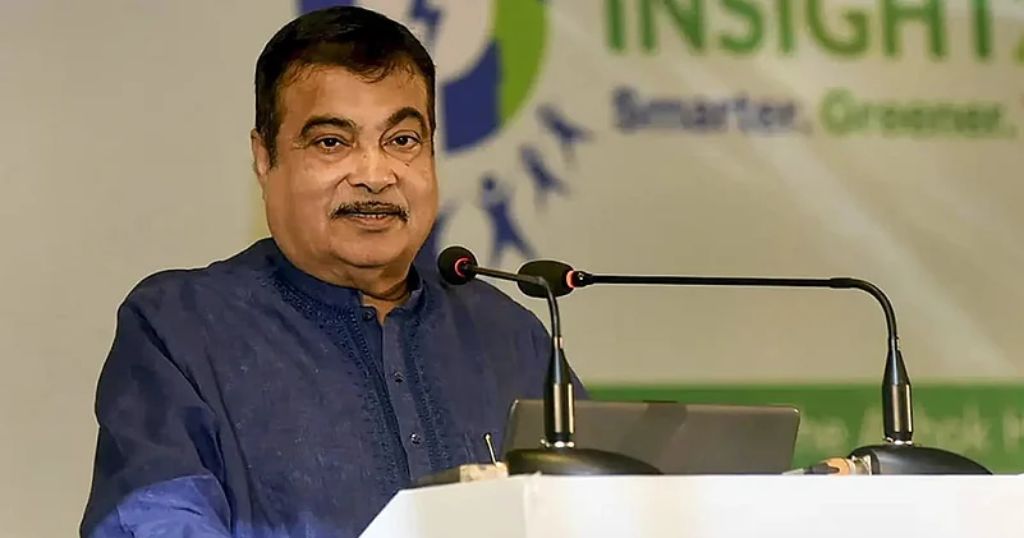Gadkari’s Mega Mobility Plan: Union Minister has unveiled an ambitious roadmap is coming next-generation of mass mobility in the country, which includes electric rapid transport, hyperloop in urban areas and ropeways, cable buses and funicular railways in an inaccessible terrain.
In an interview with PTI, the Union Road Transport Minister Nitin Gadkari said that big changes are happening in India’s transport sector. Plans include starting a tree bank, using mobile phones for the driving tests, and 11 top car companies are working on flex-fuel engines.
The plan also includes upgrading 25,000 km of two-lane highways to four lanes, building an electric public transport system on major routes, and increasing road construction speed to 100 km per day.
“We are bringing in new ideas. A big change is happening in public transport,” said Union Minister Nitin Gadkari.
He shared that the fast work is being done to improve that how people travel in India—not just in big cities, but also in faraway rural areas. Gadkari said that “We’re building ropeways, cable cars, and funicular railways at 360 places, including Kedarnath. Work has already been started at 60 of these locations”.
Funicular railways are a mix of elevators and trains. They help to move people and goods up and down with the steep slopes, especially in hilly areas.
Gadkari mentioned that the cost of these projects ranges from ₹200 crore to ₹5,000 crore. Once finished, these projects will change how India looks and travels.
He also said that better roads will boost the economy, help the country grow faster, and create jobs.
“I’m very confident that within a year, India’s highways will be as good as the roads in the U.S.,” he added. He also said that soon, big cities will have cable-powered buses and electric buses with airplane-like comfort.
Gadkari also said that the trial of projects like Metrino pod taxis, hyperloop systems, and pillar-based public transport are planned for cities like Delhi and Bengaluru.
“Technology and investment are coming together – it’s going to be a revolution,” said Union Minister Nitin Gadkari.
He shared that 11 major companies, including Tata, Toyota, Hyundai, and Mahindra, have agreed to make flex-fuel engine vehicles, which can run on ethanol, methanol, and petrol or diesel. This will help India reduce its dependence on imported fuel and cut down use of fossil fuels.
Flex-fuel vehicles can run on more than one type of fuel – like ethanol, methanol, or petrol – giving more eco-friendly options.
Gadkari’s Mega Mobility Plan: Gadkari also said that 25,000 km of roads are being upgraded from two lanes to four lanes, and the government’s target is to build 100 km of roads per day.
He clarified, “This is our target, not just a statement.”

He noted that:
- In 2013-14, India had 91,287 km of national highways (NH).
- It has increased by about 60% to 1,46,204 km.
- The length of high-speed corridors has also grown from 93 km in 2014 to 2,474 km now.
Use of New Technology
To build faster and safer roads, the government is using:
- Precast construction
- Three-foot road barriers
- AI-based road safety tools like drones and camera systems
Green Initiatives
The government plans to:
- Plant 20–25 crore trees along highways
- Transplant old trees and plant 5 new trees for every one that is cut
- Set up a Tree Bank, for which talks are in the final stages with the Environment Ministry
Electric Transport: Pilot Project in Nagpur
Gadkari revealed a pilot project:
- A 135-seater electric bus is being tested in Nagpur
- It will have AC, luxury seating, and airline-style features
- It can run at 120–125 km/h and recharge in 30–40 minutes
- Buses will be 30% cheaper to run than diesel buses and produce less pollution
Once successful, similar electric buses will be introduced on key routes such as:
- Delhi–Chandigarh
- Delhi–Dehradun
- Delhi–Meerut
- Delhi–Jaipur
- Mumbai–Pune
- Mumbai–Aurangabad
- Bangalore–Chennai
Better Facilities for Travelers
So far, 670 roadside amenities have been approved to give world-class services to travelers and truck drivers along highways.
Cutting Pollution and Logistics Costs
- India’s transport sector causes nearly 40% of the country’s air pollution.
- He stressed that green mobility (eco-friendly transport) will:
- Reduce emissions
- Lower India’s fuel import bill and which is around ₹22 lakh crore in every year
- Cut logistics costs from 14% of GDP to 9% by the end of the year 2025.






































